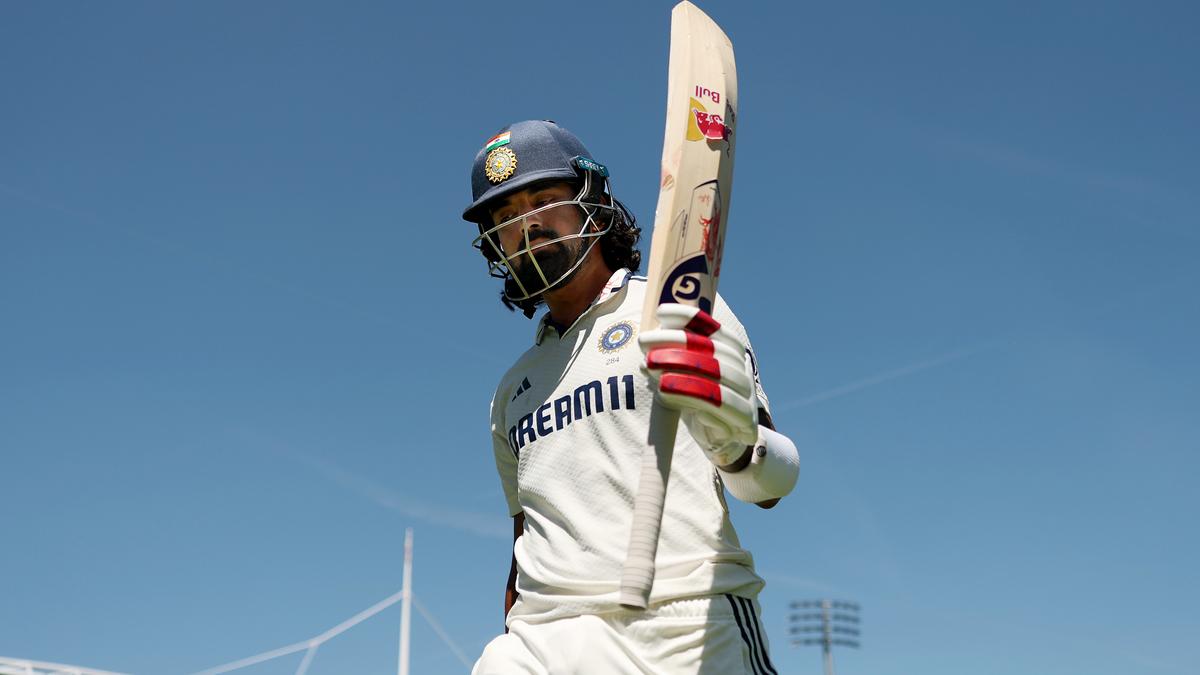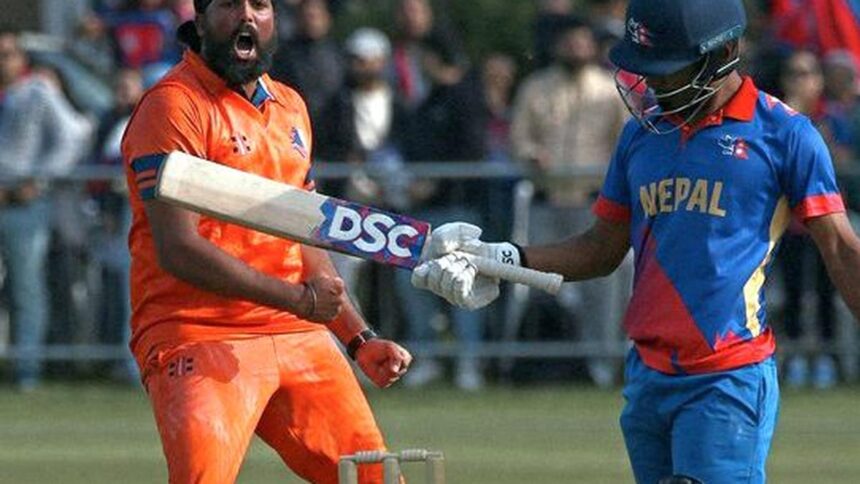It must be so easy to take K.L. Rahul for granted. Wait, that’s what India have been doing for quite a while, right?
One of Rahul’s great attributes is his versatility. His adaptability. His uncomplaining nature, his willingness to everything and more than is asked of him. Hang on, doesn’t that bring back memories of another stalwart with the same first name, hailing from the same city?
It won’t an exaggeration to state that what Rahul Dravid once did, his namesake is now doing. And doing very well of late, as even numbers which are usually open to convenient interpretation will testify.
One of the great mysteries of the modern game is how someone of Rahul’s enormous ability still doesn’t seem to have completely cracked the Test code. True, he has been moved up and down the order, especially in the last 18 months or so, but he has been around for over a decade and already boasts 60 Test caps. Now in his 61st Test, the 33-year-old averages in the mid-30s, far too few by anyone’s estimation. But make no mistake, he is on a mission to correct that, to right the wrongs of the past, to keep up his end of the bargain as the most senior specialist batter in a young Test line-up, to ensure that his all-round prowess doesn’t go against him.
Sometimes, the greatest attribute that we alluded to earlier can work against an individual, which is exactly why Rahul has been shunted up and down the Test batting order since the tour of South Africa in 2023-24. Out of favour when it comes to Twenty20 Internationals, he has a settled role in the ODI set-up, as a middle-order batter/finisher and wicketkeeper. Such is his felicity in that job description that even someone as outrageously gifted as Rishabh Pant is unable to break back into the 50-over setup.
Well-defined role
Now, it would appear, Rahul has belatedly been given a well-defined role in the five-day game – as the all-weather opener whose twin responsibilities are to form the bedrock of the batting group and eke out his own runs, while taking the younger bunch along with him, striking up partnerships, embracing a mentoring role and sharing his wisdom, experience and tribulations, all of it aplenty.
This clarity is working wonders. Five innings into the ongoing Test series in England, Rahul has 336 runs at an average of 67.20. His string of scores reads 42 and 137 (Leeds), 2 and 55 (Birmingham) and 100 (first innings at Lord’s), making it the first time he has made more than one century in a Test series. Shubman Gill and Rishabh Pant have hogged the limelight, the former with his extraordinary consistency and the latter with his extraordinary presence, while Rahul has chipped away quietly in the background, building a formidable wall brick by solid brick.
It was fascinating to listen to him speak about his approach to opening in Tests and how the template changes depending on conditions. When the ball is doing a lot, he says, and when there is a ball with his name on it just round the corner, he isn’t averse to pulling a multitude of strokes out of his bag, not unwilling to unsettle the bowlers’ rhythm, not afraid to try to transfer the pressure. But when the pitches are good for batting, like they have been on this tour, he slips back to what comes best and most naturally to him – grind out big scores, pick his areas to score, keep his ego firmly in check.
Just on Friday evening, a very senior English journalist who has been on the job for more than a half-century was raving about Rahul’s correctness. About the ease of his movements, about his flowing cover-drives, yes, but also his solid defensive play and the nonchalance with which he leaves balls. Sadagopan Ramesh, the former India opener, once revealed that the greatest advice he had received in his early days in first-class cricket was from Dravid, who urged him to ‘learn to love leaving the ball’. Clearly, this ‘new’ Rahul has imbibed that philosophy because he doesn’t get flustered if he is kept scoreless for long periods, he doesn’t feel the itch of a static scoreboard.
Batting on flat decks might appear straightforward, but clearly, it is not. Despite cricket’s reputation as being a ‘batsman’s (now batters’) game’, all it takes is one ball to get them out. A bowler can go for five sixes in an over and still have the last laugh. A batter doesn’t have the same luxury; one mistake can be, and often is, the last.
To bat against fresh pace bowlers on a yet-to-be-used surface on the first morning of any game is an enormous challenge, which is magnified by the quality of the attack one is confronted with. It is to Rahul’s enormous credit that eight of his ten Test centuries have come outside the subcontinent and seven of those as an opener, including three now in England and two at Lord’s alone. Somehow, it is befitting that stately Lord’s, steeped in tradition and history, has brought the best out of the traditionalist that is Rahul. It appears an organic, natural fit.
Rahul is as eloquent with words as he is elegant with the bat, and you can hear the gears click in his head – not jarringly – as he pauses in thought before throwing light on how he has been preparing mentally. The physical effort, including long hours at practice sessions, are there for everyone to see. This is a team where so many players love to bat at nets, among them Gill and Rahul’s opening partner, Yashasvi Jaiswal. Rahul keeps pace with these youngsters, often the first to arrive at practice and the last to leave, batting not just time but also with focus as he aims to address potentially tricky issues.
The mental processes, however, are anything but obvious. Unless the protagonists themselves are willing to throw light. “In the last couple of years, I have worked on a few mental drills,” Rahul acknowledged, warming to the theme of mental discipline and fronting up mentally fresh innings after innings, Test after Test. “I have spent a bit of time with an expert who can help me with improving my reaction time and some mental drills and games that you can play that help you get better with your reaction time and stuff like that. A lot of other sports use it.
“I have seen this in Formula One and I picked this up from one of the guys that I worked with in Salzburg (Austria). “I am closely associated with Red Bull, so I had the opportunity to go there and work with some of the coaches that work with the elite Formula One guys and other adventure sports people who require a lot of this mental side of the game. That is the only thing that has been different in the last year or so. “But I have always enjoyed batting long periods of time. When I was growing up, even when I played junior cricket, I always enjoyed batting long hours, I could focus for long hours. A bit of that and a bit of this has helped me in the last few years.”
It’s amazing how Rahul has been able to strike fruitful alliances with batters who are completely different from him in approach and mindset. He has had numerous meaningful opening associations with Jaiswal
as well as in the middle of the innings with Pant, two left-handers with an aggressive mindset. The rangy
Jaiswal is more in the conventional mould while Pant is anything but that, a revolving door of immense surprises and untold delight (occasionally exasperation too). At Lord’s, Rahul and Pant put on 141 for the fourth wicket, a wonderful alliance of the classical and the unique, of soulful jazz at one end and uninhibited heavy metal at the other.
When Rahul speaks of Pant, it is with wonderment – a touch of envy too, perhaps?! – and utter and complete respect. “I thoroughly enjoy batting with him,” he couldn’t help the smile that brought out his dimples. “When we are batting together, I look at the way he bats and I wish and I hope I could do that. Some days, I sit where there are no games and dream of playing shots like that and playing with that kind of a mindset and attitude. It will remain a dream.
“We do chat quite a lot about cricket and batting and the technical bit of batting as well. We were both injured and at the NCA back in Bengaluru and we would see each other every day. That’s probably the first time I realised there is a lot of thought behind how he bats. He is a deep thinker of the game.”
As is Rahul. He has other varied interests but when he is around cricket, he is totally committed to the sport, always looking for ways and means to improve on a personal level and contribute to the team, for methods to help out his new captain. “That is something I have stressed on a daily basis,” he reflected on his ‘seniormost specialist batter’ status. “My mindset or my hunger or my passion towards the team has always been there. But in the last few years, the performance has also reflected that.”
Numerous times in the past, Rahul has begun a series superbly before tapering off midway through, prompting suggestions before this series that someone should get into his head and convince him that this is a ten-Test showdown. Maybe that’s what someone has done, because his consistency has been second to none and the simplicity of his game coupled with the steel in his eye suggest he is anything but satisfied. Maybe these aren’t the ‘English conditions’ that were once romanticised and feared in equal parts, but there must be a certain joy in living up to expectations – one’s own – that can’t be matched. Rahul’s expectations of himself, one can rest assured, are neither modest nor minimalistic.





















